 September
12
September
12
Tags
The Lascaux Cave Paintings: Human Desire into Art
 On the 12th of September 1940, prehistoric paintings were discovered in Lascaux, France on cave walls and ceilings seen today as some 17,000 years old. “The cave was discovered by four teenage boys in September 1940 and was first studied by the French archaeologist Henri Breuil. It consists of a main cavern (some 66 feet [20 metres] wide and 16 feet [5 metres] high) and several steep galleries. Each is magnificently decorated with engraved, drawn, and painted figures, in all some 600 painted and drawn animals and symbols and nearly 1,500 engravings. The paintings were done on a light background in various shades of red, black, brown, and yellow. In places, a scaffolding was clearly used to reach high walls and the ceiling. Among the most remarkable pictures are four huge aurochs (some 16 feet [5 metres] long), their horns portrayed in a “twisted perspective”; a curious two-horned animal (misleadingly nicknamed the “unicorn”), perhaps intended as a mythical creature; red deer with fantastic antlers; numerous horses; the heads and necks of several stags (3 feet [almost 1 metre] tall), which appear to be swimming across a river; a series of six felines; two male bison; and a rare narrative composition, at the bottom of a shaft, that has been variously interpreted as a hunting accident or as a shamanistic scene.” (Britannica). The exact purpose of these paleolithic paintings is still not known. Evidence suggests that they were not simply decorations of living areas since the caves in which they have been found do not have signs of ongoing habitation, often located in areas with difficult access for early humans. Some theories hold that cave paintings may have been a way of communicating with others, while others ascribe religious or ceremonial purposes to them. So what could have been the ‘use’ of these images?
On the 12th of September 1940, prehistoric paintings were discovered in Lascaux, France on cave walls and ceilings seen today as some 17,000 years old. “The cave was discovered by four teenage boys in September 1940 and was first studied by the French archaeologist Henri Breuil. It consists of a main cavern (some 66 feet [20 metres] wide and 16 feet [5 metres] high) and several steep galleries. Each is magnificently decorated with engraved, drawn, and painted figures, in all some 600 painted and drawn animals and symbols and nearly 1,500 engravings. The paintings were done on a light background in various shades of red, black, brown, and yellow. In places, a scaffolding was clearly used to reach high walls and the ceiling. Among the most remarkable pictures are four huge aurochs (some 16 feet [5 metres] long), their horns portrayed in a “twisted perspective”; a curious two-horned animal (misleadingly nicknamed the “unicorn”), perhaps intended as a mythical creature; red deer with fantastic antlers; numerous horses; the heads and necks of several stags (3 feet [almost 1 metre] tall), which appear to be swimming across a river; a series of six felines; two male bison; and a rare narrative composition, at the bottom of a shaft, that has been variously interpreted as a hunting accident or as a shamanistic scene.” (Britannica). The exact purpose of these paleolithic paintings is still not known. Evidence suggests that they were not simply decorations of living areas since the caves in which they have been found do not have signs of ongoing habitation, often located in areas with difficult access for early humans. Some theories hold that cave paintings may have been a way of communicating with others, while others ascribe religious or ceremonial purposes to them. So what could have been the ‘use’ of these images?
Prof. Suzanne Guerlac of University of California, Berkeley wrote a fascinating article in which she attempted to explain the role of the prehistoric images as seen from a cultural viewpoint: “The Lascaux cave, known as the Sistine Chapel of prehistoric art because of its stunning wall paintings, was discovered, quite fortuitously, in 1940. Opened to the public in 1948, it became the site of serious archaeologica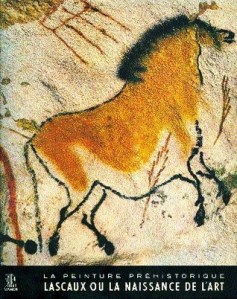 l study only in the early 1950s, with work carried out by l’Abbé Breuil, the most celebrated French paleontologist of the time. In 1952 Breuil published his monumental Quatre Cent Ans d’art pariétal, in which he developed his thesis concerning the magical power of prehistoric cave paintings, powers he explained in terms of primitive hunting rituals. Three years later Georges Bataille published Lascaux ou la naissance de l’art, in which he shifted Breuil’s interpretation toward a notion of religious transgression. (…) In Lascaux ou la naissance de l’art, Bataille puzzles over what he takes to be a certain lack of interest in the prehistoric cave on the part of specialists. Is it, he asks, pudeur that inhibits a return to this “place of our birth”—a fear of regression, perhaps?” (Suzanne Guerlac, ‘The Useless Image: Bataille, Bergson, Magritte’, Representations, Vol. 97, No. 1, Winter 2007). At the time of writing his book, Bataille noted the lack of knowledge and of interest by specialists in the Lascaux cave paintings. From a historical point of view, their discovery in 1940 coincided with the cruelest war seen by humanity: with its machines of death, Auschwitz, then Hiroshima, so Bataille tied to find through Lascaux a moment of unifying harmony. He also reached beyond disciplinary fragmentation to imagine a moment when thought was universal. Bataille’s reflections on the possible origins of humanity coincide with the intensified threat of its possible extinction.
l study only in the early 1950s, with work carried out by l’Abbé Breuil, the most celebrated French paleontologist of the time. In 1952 Breuil published his monumental Quatre Cent Ans d’art pariétal, in which he developed his thesis concerning the magical power of prehistoric cave paintings, powers he explained in terms of primitive hunting rituals. Three years later Georges Bataille published Lascaux ou la naissance de l’art, in which he shifted Breuil’s interpretation toward a notion of religious transgression. (…) In Lascaux ou la naissance de l’art, Bataille puzzles over what he takes to be a certain lack of interest in the prehistoric cave on the part of specialists. Is it, he asks, pudeur that inhibits a return to this “place of our birth”—a fear of regression, perhaps?” (Suzanne Guerlac, ‘The Useless Image: Bataille, Bergson, Magritte’, Representations, Vol. 97, No. 1, Winter 2007). At the time of writing his book, Bataille noted the lack of knowledge and of interest by specialists in the Lascaux cave paintings. From a historical point of view, their discovery in 1940 coincided with the cruelest war seen by humanity: with its machines of death, Auschwitz, then Hiroshima, so Bataille tied to find through Lascaux a moment of unifying harmony. He also reached beyond disciplinary fragmentation to imagine a moment when thought was universal. Bataille’s reflections on the possible origins of humanity coincide with the intensified threat of its possible extinction.
For a cultural historian, the enigmatic motivations which gave birth to these ancient pictures remains. There is a theory that they had no use at all, except that of capturing a mental projection of their prehistoric creators, perhaps a visual reflection of their desires. This was an outward projection of their inner world. Guerlac writes that, “If primitive artists could paint animals so convincingly (indeed Norbert Aujoulat admires the “uncommon mastery of motion and perspective” of Lascaux’s cave paintings, as well as their precision of detail), why did they not produce comparable images of themselves? (…) The act of making art implies a passage from nature to culture. (…) In the Lascaux cave, the figural image addresses us from the depths of time, performing its “endless survival”  until it reaches us. It is through this address that the primitive “beast” becomes an artist, entering into history and culture. (…) Bataille claims the cave images were useless because they were created from desire, not for some instrumental (or ritual) purpose; this is what makes them art. In the second place these images are useless because they do not tell us what we want to know.” (Suzanne Guerlac). In modern Western art, Surrealist artists such as Rene Magritte went against modernist abstraction which was fashionable in the first half of the 20th century, arguing that painting was fundamentally an art of resemblance. Yet, the latter was not a mimetic relation between an image and a model, such as in realist art, but an act of visual thought. Far from being copies of reality, Magritte’s seemingly figurative works were projections of his imaginative mind. “The images I paint,” he wrote, “show nothing except what I have thought” (Ecrits, 689). It may equally be argued that the Lascaux cave men and women painted images as a way to express what they were feeling at the time, what they had observed in their life, and possibly what they desired in their primitive existence on earth.
until it reaches us. It is through this address that the primitive “beast” becomes an artist, entering into history and culture. (…) Bataille claims the cave images were useless because they were created from desire, not for some instrumental (or ritual) purpose; this is what makes them art. In the second place these images are useless because they do not tell us what we want to know.” (Suzanne Guerlac). In modern Western art, Surrealist artists such as Rene Magritte went against modernist abstraction which was fashionable in the first half of the 20th century, arguing that painting was fundamentally an art of resemblance. Yet, the latter was not a mimetic relation between an image and a model, such as in realist art, but an act of visual thought. Far from being copies of reality, Magritte’s seemingly figurative works were projections of his imaginative mind. “The images I paint,” he wrote, “show nothing except what I have thought” (Ecrits, 689). It may equally be argued that the Lascaux cave men and women painted images as a way to express what they were feeling at the time, what they had observed in their life, and possibly what they desired in their primitive existence on earth.




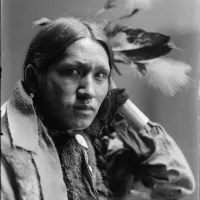
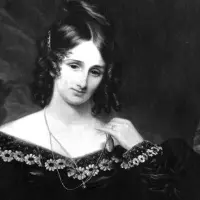
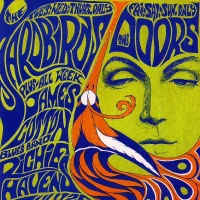
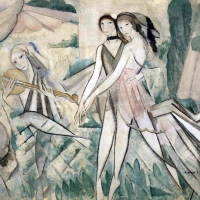
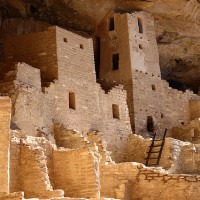

I am very fascinated by ancient rock- and cave art myself. The motivation of this art is a fascinating question, although we might never really know. The interpretation of everything as religious is not very convincing to me, although it is a possibility. I have myself done some such speculation some time ago with regard to some (much more recent) rock art from the Sahara (see http://asifoscope.org/2013/10/18/rock-art/).
Maybe they just did it because it was possible. After they had found out it could be done, it might have given them a feeling of accomplishment. Why did people go to the moon? It was useless, but fascinating and gave them a subjective edge over others.
Anyway, that is speculation just as well. In any case, these paintings are juts beautiful. Whoever made them, these people where great artists.
LikeLiked by 2 people
I feel the artists didn’t paint themselves because self absorption wasn’t part of their normal.
LikeLiked by 3 people
Reblogged this on msamba.
LikeLike
Amazing! After THIS is all decandence
LikeLike
I give a (strong) like for the art, certainly not for the self-indulgent nonsense of (particularly) Bataille et al.
LikeLike
Reblogged this on Greek Canadian Literature.
LikeLike